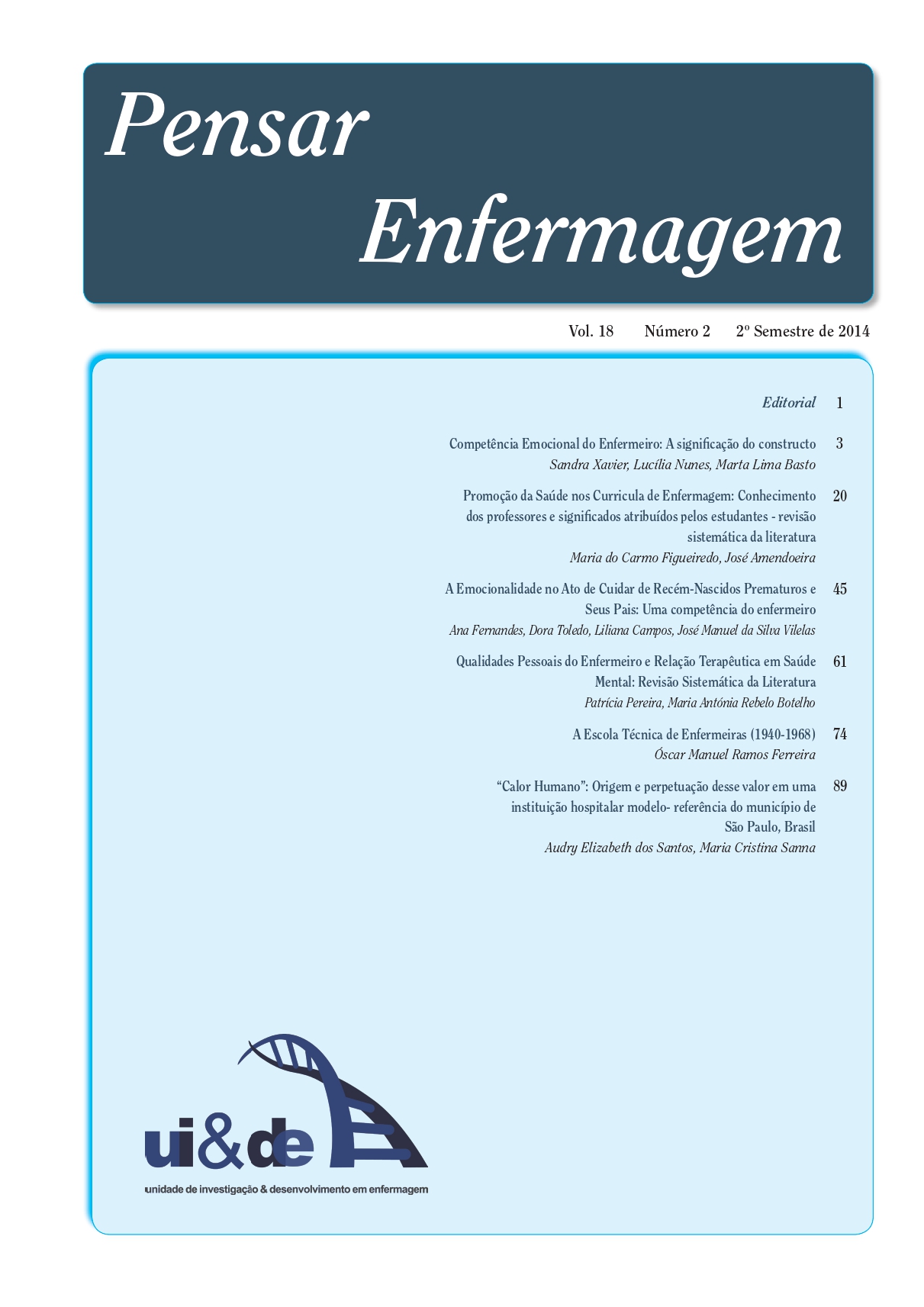Published 2014-12-30
Keywords
- History of nursing,
- nursing education,
- nursing schools,
- Portuguese nursing school “Escola Técnica de Enfermeiras”
How to Cite

This work is licensed under a Creative Commons Attribution 4.0 International License.
Abstract
This article is about the Portuguese nursing school “Escola Técnica de Enfermeiras”, founded in 1940 in Lisbon. Its purpose was to train polyvalent nurses that were able to practice their profession both in hospitals and in the community with the families and individuals who resided there. With this presentation I intend to discuss how this school was created, how it evolved, and I will also identify how it influenced nursing education and practice both nationally and internationally. The chronological scope of this
article includes the years between 1940 and 1968. The methodology consisted of the gathering of information from different archives, characterisation and analysis of the document sources, and heuristic and hermeneutic treatment. The archives included, among others, those located at Escola Superior de Enfermagem de Lisboa in the Francisco Gentil campus, Instituto Português de Oncologia, Ministério da Educação, Direção Geral da Saúde, Torre do Tombo; Biblioteca Nacional, and the Rockefeller Foundation in Tarrytown New York. The bibliographic references used several works from Magalhães (2004), Nóvoa (1995), Viñao Frago (2007), and Corrêa (2002) and also primary sources as the article from Diniz (1953) and the work published by the Committee on the National League of Nursing Education Curriculum (1938). The Escola Técnica de Enfermeiras, founded in 1940, was planned in 1935 with the
collaboration of the Rockefeller Foundation. The first phase (consolidation) corresponds to the period between 1940 and 1946, followed by an affirmation phase (1946-1954). This process culminated with a height stage and opening of this nursing educational institution to the country and the world (1954-1968). From 1968 onwards it began to lose its importance as a model school due to legislation enacted in the second half of the 1960s, which improved the way nursing education was conducted in educational institutions under the Health Ministry. Finally, the importance and documentary value of the Fundo Documental e Museológico
is confirmed at an educational institution whose motto was “learning to teach” and to which I add “professionalize”.

